




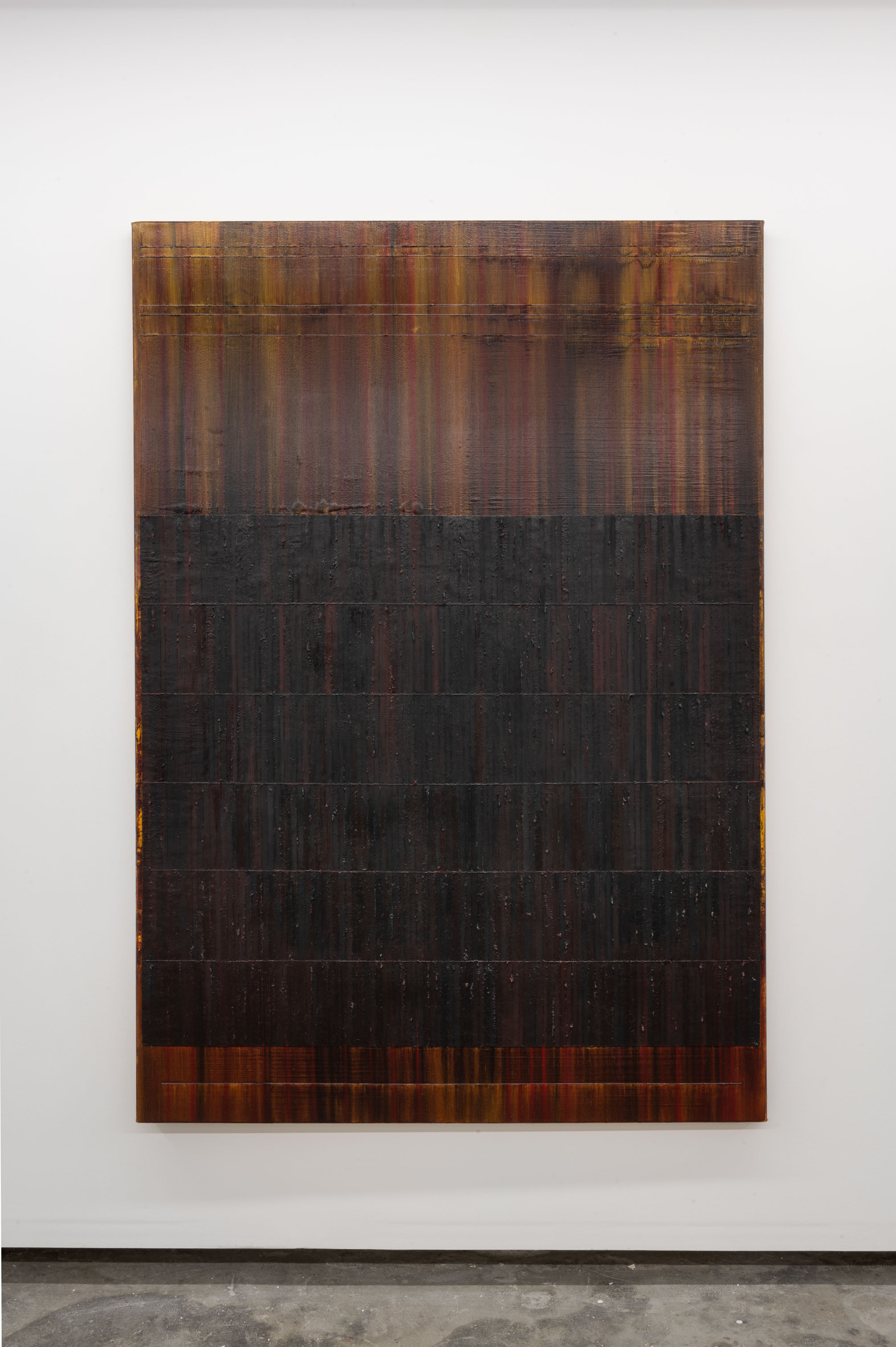
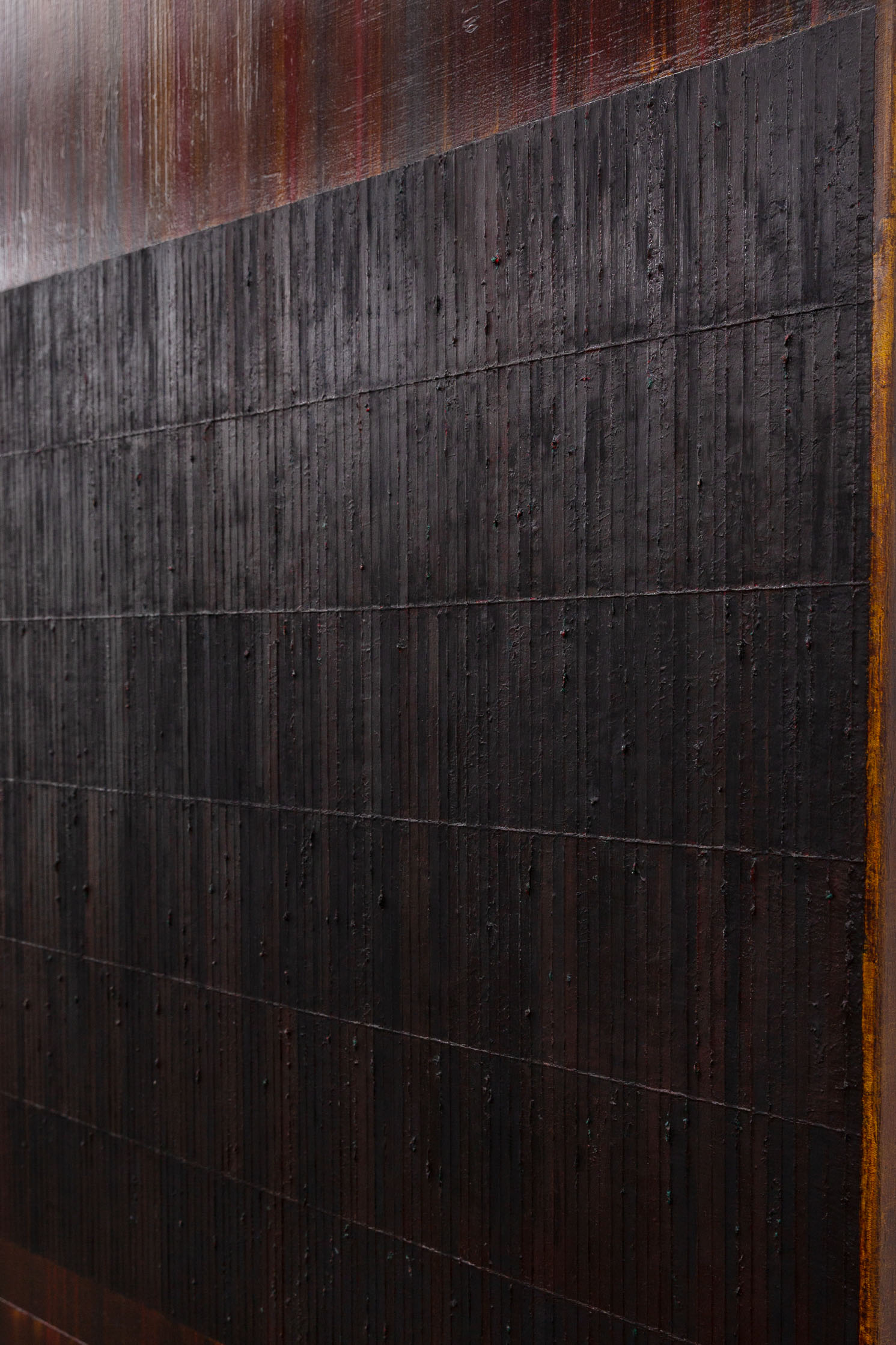
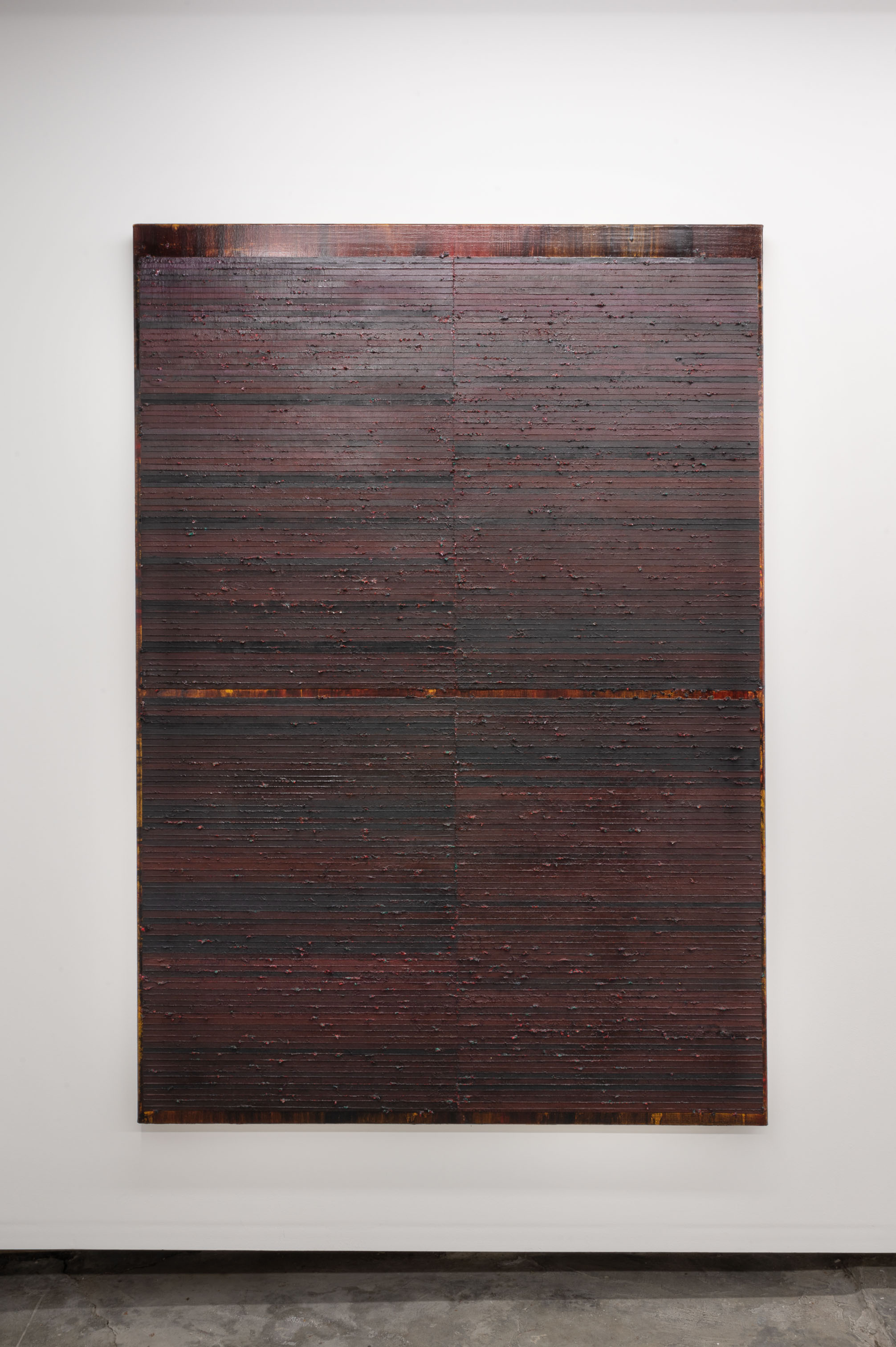
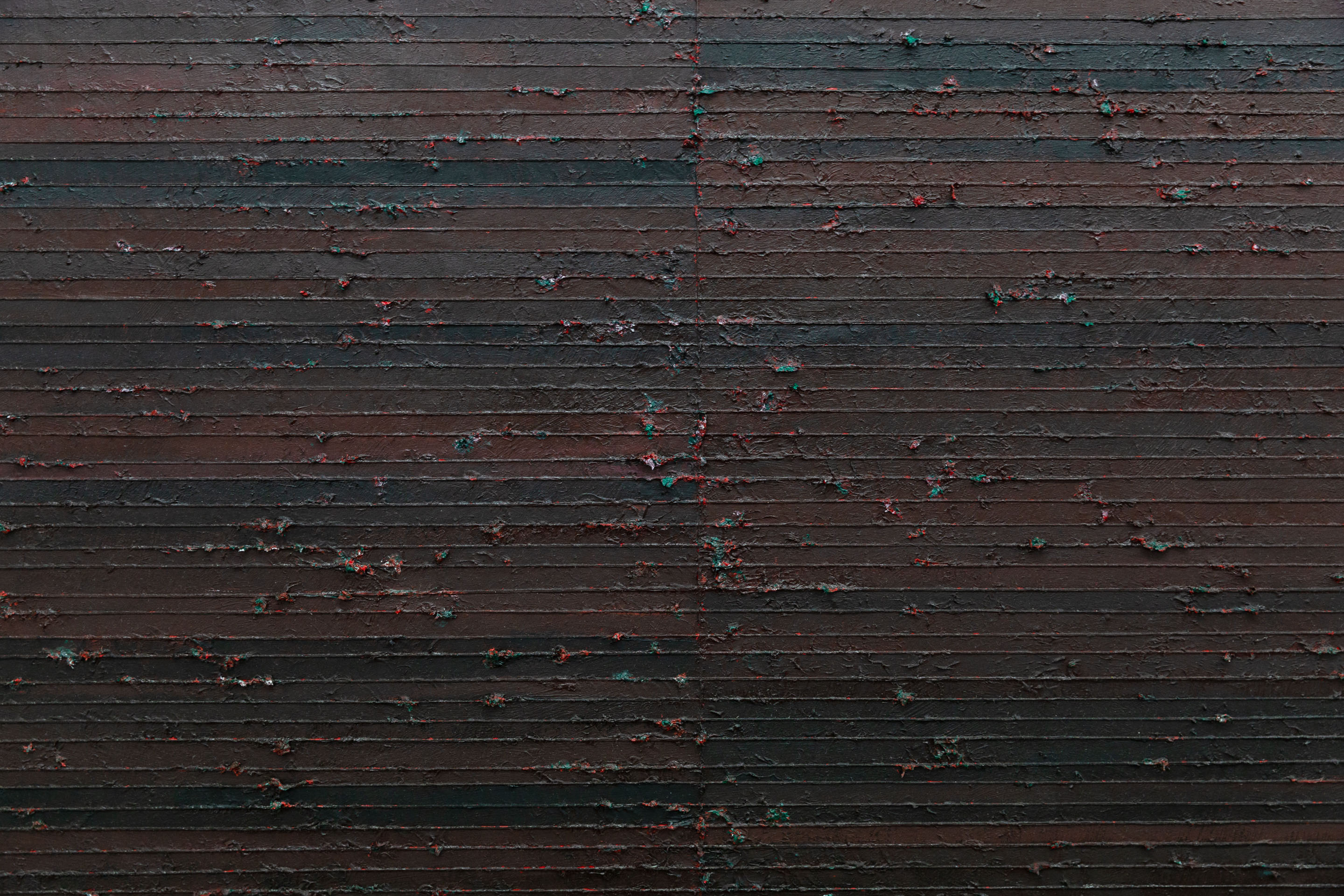
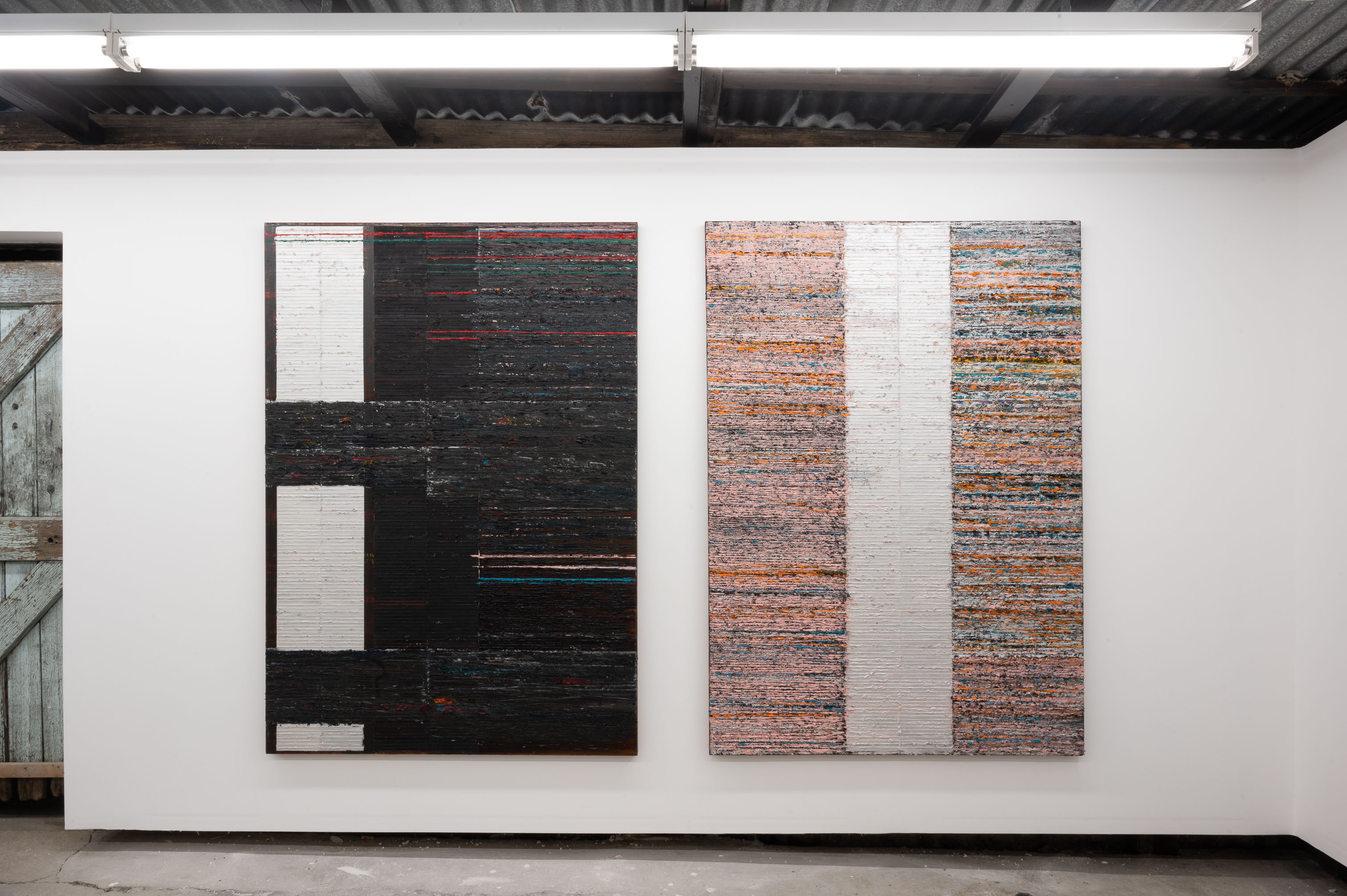
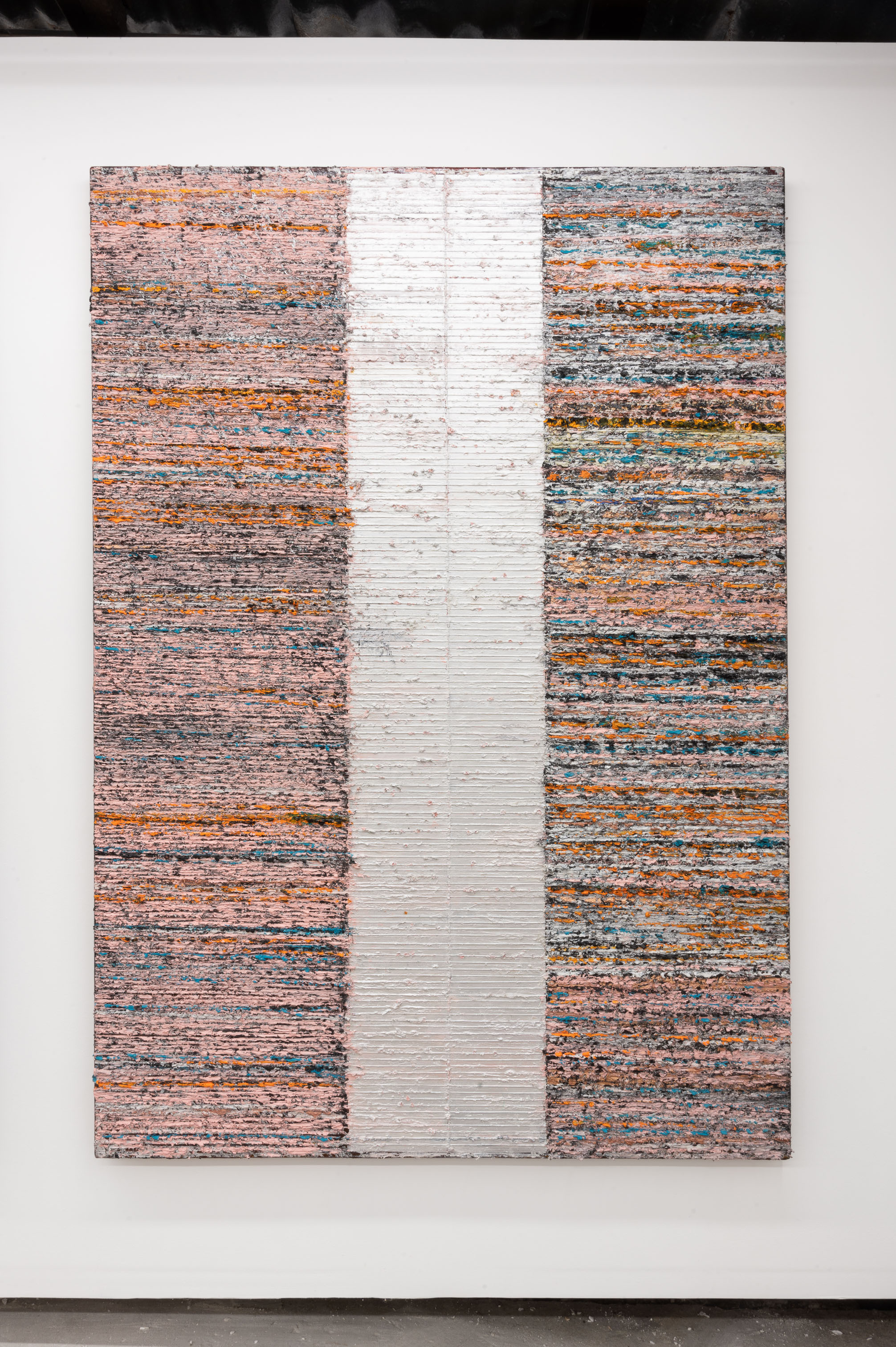

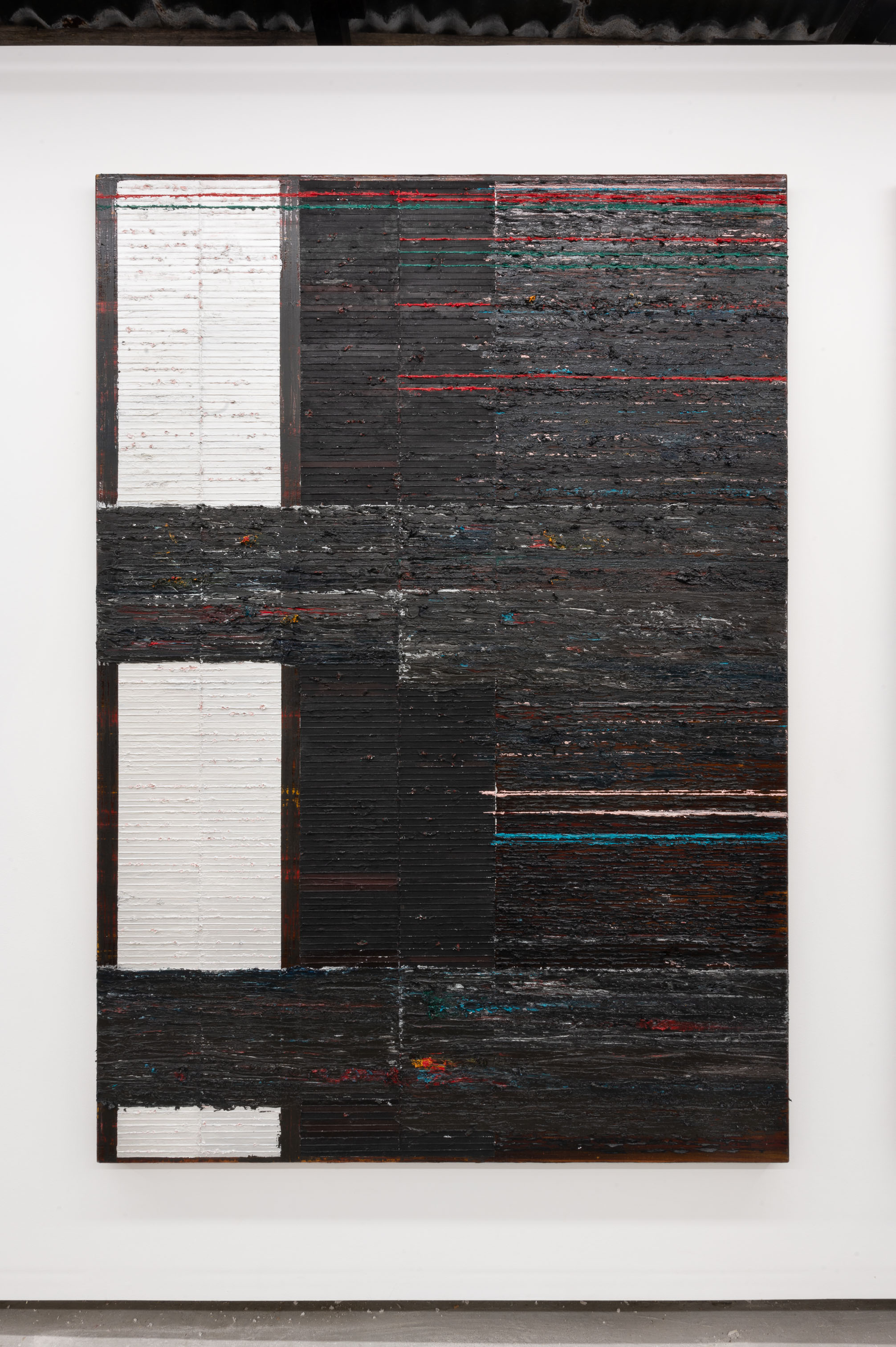
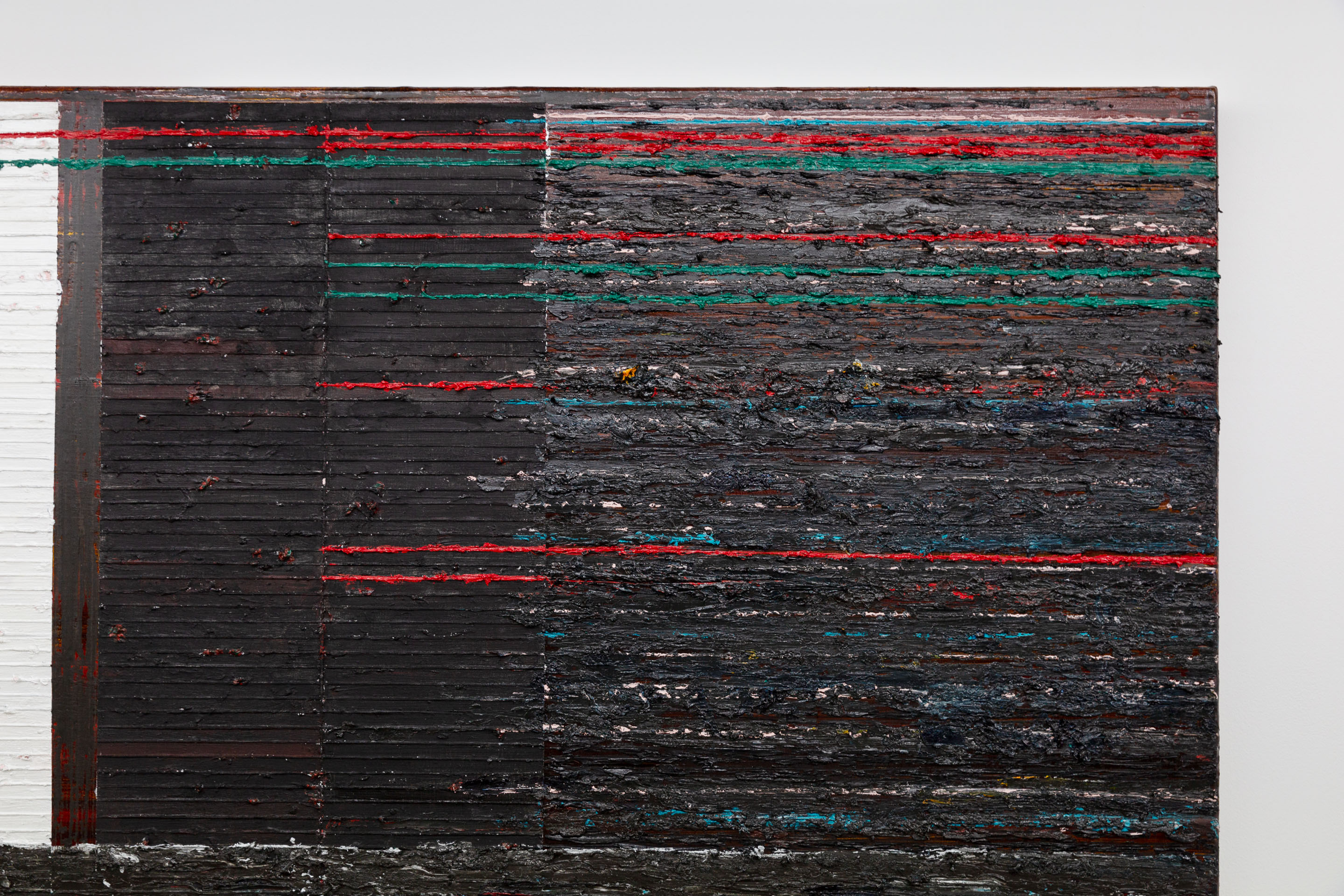
Nik Lee, 'Recent Works'.
18 Feb - 6 Mar 2023
Dear Nik,
Apologies in advance. I’m just—how do I say this? If whittling down our wonderful conversations—in your studio, in Carlton cafes, walking, on the phone, idling in that playground—is what you want of me, then right now the task is too distressing. Right now, all I can give you is this brief letter—scattered thoughts from notes of our conversations. Perhaps another time would be better. What you did ask for was the sensation of engaging with this work, and this is some of it, albeit laden with caveats.
Writing about a show of new work—or any show—always seems to impose—intentionally or otherwise—a sort of autocratic exegesis that suffocates things with theoretical and artistic references. Often it jazzes up a turd. I remember somebody telling me how a Sotheby’s chairman would happily admit that the fastest way to sell a contemporary work to buyers more familiar with the Canon was to compare it to, say, a Rothko and use the same illustrious but wholly vacuous (and not in a good way!) language. Alas, Nik, over the years I have accumulated these opinions about arts writing and formed them into a brick wall. Insurmountable. Recursive. The positives (its ability to widen the audience) and negatives (how it can act like photographic fixer, creating the illusion of the stability of meaning; how discursive framing around forms can kill them dead; how it becomes complicit in the ever- increasing institutionalisation of art, in the internalised fascisms of needing to bracket a “practice” and find “meaning”). Being vague or poetic—or in this case, evasive—seems not to be a way over this wall either. People should perhaps refrain from being a passive parrot, but, as always, my opinion on all of this will probably change by the time the show opens.
You sent images of four of the works—the others, I gather, will be left in the studio. I asked as I had no idea what state they were in. Maybe they’ll change again, less than 24 hours before the exhibition. They’ll doubtless change when they walk in the shed door, and I’m keen to see how the floor and the plinth change the work; how you’ll balance the work—maintain the symmetry; how the scar-lines—“evil, like a skeleton, permanent”—across the forehead and chins of some of the works will relate to the gap where the wall ends and ceiling and floor begins; how the scale and size of the rectangular canvases mirror the proportions of your own frame—cropped before your elbow and below the knee; how that one where the grid-figure begins where your eyes would end will look facing me, and likewise the other one where the ground peeks through as if you’ve sliced a millimetre gap through your entire head, held suspended; how the light moves through these layers and against that cold grubby grid or “repeating ratios”; how you might have varied the colour temperature of different parts of each grid, or the garish brown streaks that form a ground. They feel, in person, affirming—the right means for your end. MR’s words: “I hope to ruin the appetite of every son of a bitch who ever eats in that room.”
How—how... how paintings can present a space that can be touched but never grasped. You were always averse to any sort of subtractive decision making, which I think adds to the light of the paintings. No scrubbing away—only adding—accepting what you have, working with your mistakes; how you swiftly resolved that static work into something else. How I stare at them; how they stare back. I’m hitting my head against the wall, Nik, projecting associations onto a seemingly non-objective field. DW’s words: “Bourgeois sensibility Rorschach test”. Interiority—I know nothing about poker, but I obsess over faces (“ratio and nerves that feel both empty and full”). Another year, another article, ‘Has the Figuration Bubble Burst? Abstract Painting Dominates the Booths at Frieze London’. A gallerist is quoted as saying, “People are a bit fed up—they want more freedom to interpret as they wish.” Non-representational painting’s crisis in its relationship to pronouncements of decoration and logos. Lawler. My eyes—my eyes are traumatised by the godforsaken internet. The spindly lines return—from your grad show, then to the drips and spatters from the Casino show—now here, sublimated into the grid, all verticals and horizontals. Your first video work being so jail-like. Your directive titles in past works. They’re gone completely—no titles in the Casino show either. Your poster though for that show? That long, radial rectangle. The Monolith. Orientation. If there was a vanishing point, where would it be? Your refs for this show: “Repeating found ratios”, Poker Instinct—imagining you sharing a game of cards with your only friend in high school, with your unaffected face broken by a laugh and a smile, Lassnig (which makes sense), Frank (I have no idea), the silhouette of the skyline, so different from the Friedrich-like Tasmanian landscape you faced in the panorama glass. Snell and “eliminating distances''. You speak about wanting to “make something not in your head but shift your body”. Instead, for me, they feel like a weightless brick in the mind—without language. These paintings aren’t my future. I imagine others in bygone years feeling the same when faced with the work of another. That word you keep repeating—future. PM’s hatred of curves—“there are no straight lines in nature”—reproduction; the pure undifferentiated cell as perfect.
I hope this does the job and thank you for asking me, with lots of love,
- Douglas Maxted
Special thanks to Amber, Anna, Kat, Kon, Stuart, Tim, Jacob, M&J&A.
